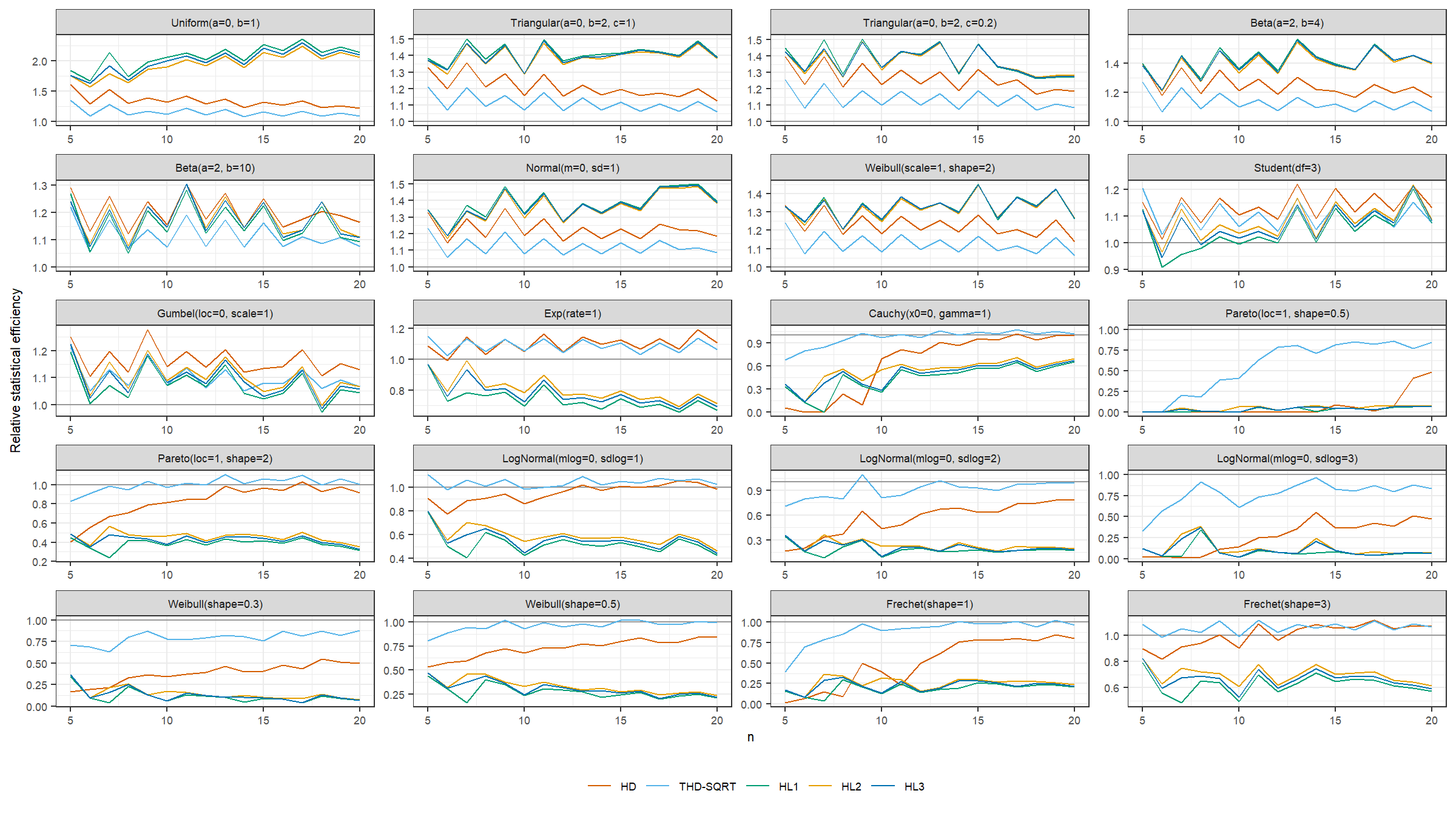Statistical efficiency of the Hodges-Lehmann median estimator, Part 2
In the previous post, we evaluated the relative statistical efficiency of the Hodges-Lehmann median estimator against the sample median under the normal distribution. In this post, we extended this experiment to a set of various light-tailed and heavy-tailed distributions.
Introduction
The Hodges-Lehmann EstimatorHodges-Lehmann median estimator is defined as the sample median of all pair-wise averages of the given sample.
However, there are various ways to define an explicit formula.
Following an approach from Investigation of finite-sample properties of robust location and scale estimators
By Chanseok Park, Haewon Kim, Min Wang
·
2020park2020, we consider three options:
We also consider the classic Harrell-Davis quantile estimator which can also be used to estimate the median:
$$ Q_\textrm{HD}(p) = \sum_{i=1}^{n} W_{i} \cdot x_{(i)}, \quad W_{i} = I_{i/n}(a, b) - I_{(i-1)/n}(a, b), \quad a = p(n+1),\; b = (1-p)(n+1) $$where $I_t(a, b)$ denotes the regularized incomplete beta function, $x_{(i)}$ is the $i^\textrm{th}$ order statistics.
In addition, we consider the trimmed Harrell-Davis quantile estimator based on the highest density interval of size $1/\sqrt{n}$ (we denote it as $Q_{\operatorname{THD-SQRT}}$).
Simulation study
In order to evaluate the relative statistical efficiency of the listed median estimators against the sample median, we use the following scheme:
- Enumerate different sample size values $n$ from $3$ to $20$.
- Enumerate various light-tailed and heavy-tailed distributions
- For each sample size, we generate $1\,000$ samples from the given distribution.
- For each sample, we estimate the median using the sample median, the Harrell-Davis quantile estimator $Q_{\operatorname{HD}}$, the trimmed Harrell-Davis quantile estimator $Q_{\operatorname{THD-SQRT}}$, and three versions of the Hodges-Lehmann median estimator $Q_{\operatorname{HL1}}$, $Q_{\operatorname{HL2}}$, $Q_{\operatorname{HL3}}$.
- Estimated the relative statistical efficiency of each case.
The results of the performed simulation study are shown in the following figure:
As we can see, the Hodges-Lehmann median estimator works great in the light-tailed case. However, in the heavy-tailed case, the Harrell-Davis quantile estimator and its trimmed modifications have better relative statistical efficiency.
References
- [Harrell1982]
Harrell, F.E. and Davis, C.E., 1982. A new distribution-free quantile estimator. Biometrika, 69(3), pp.635-640.
https://doi.org/10.2307/2335999 - [Park2020]
Park, Chanseok, Haewon Kim, and Min Wang. “Investigation of finite-sample properties of robust location and scale estimators.” Communications in Statistics-Simulation and Computation (2020): 1-27.
https://doi.org/10.1080/03610918.2019.1699114

